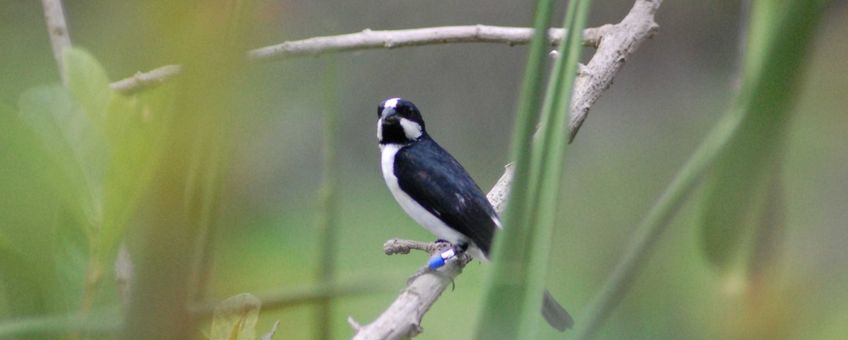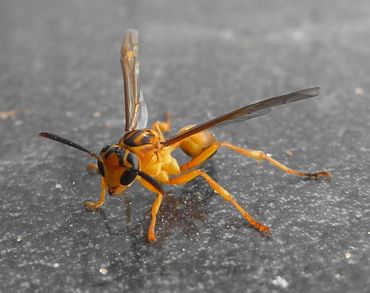
Aggressive wasp eats baby bird's head
Wageningen UniversityThis is the wasp species Agelaia pallipes: a very aggressive species that occurs in a large part of Central and South America. These wasps were already known to eat crickets, moths and flies. The rotting flesh of dead animals is also on the menu. However, it has never been established that these wasps can also attack vertebrates, in any case there are only a few cases confirmed worldwide of this type of attack by other wasp species.
Totally unexpected
 Researchers from Wageningen University & Research studied the reproductive behavior of the songbird lined seedeater (Sporophila lineola) in Brazil. For that purpose they had put up cameras near the nests. "We had already found dead young birds," says researcher Sjoerd Frankhuizen. "But we had no idea a wasp might have done that. It was totally unexpected".
Researchers from Wageningen University & Research studied the reproductive behavior of the songbird lined seedeater (Sporophila lineola) in Brazil. For that purpose they had put up cameras near the nests. "We had already found dead young birds," says researcher Sjoerd Frankhuizen. "But we had no idea a wasp might have done that. It was totally unexpected".
The study published in the journal Ethology also states that a few days after the filmed attack, the researchers found even more baby birds with similar head wounds. Destroying nests plays a major role in bird selection pressure. Frankhuizen: "These images provide new insight into the possible nest predators. Until now, it has rarely been assumed that insects play a role in this natural selection".
Possible explanation
A possible explanation for the attack could be that the wasps were attracted to the scent of two dead baby birds near the nest. The nest in question first contained three young birds of between one and six days old. Two of them were dead before the investigators installed the camera. It is not possible to say with certainty what is the cause of death of the first two birds.
Wasp attacks baby lined seedeater (Source: Sjoerd Frankhuizen, Leonardo Esteves Lopes en Filipe C. R. Cunha)
The images show how the wasp lands a few times on the head of the baby lined seedeater and bites the head until it bleeds. The little one's parents left the nest for a while. On a subsequent return, the wasp rips a piece of meat from its head and the baby bird stops moving.
More information
Text: Mark van der Meijs, Wageningen University
Photos: Sjoerd Frankhuizen (lead photo: witsterdikbekje); Gionorossi, CC BY-SA 4.0
Film: Sjoerd Frankhuizen, Leonardo Esteves Lopes and Filipe C. R. Cunha
